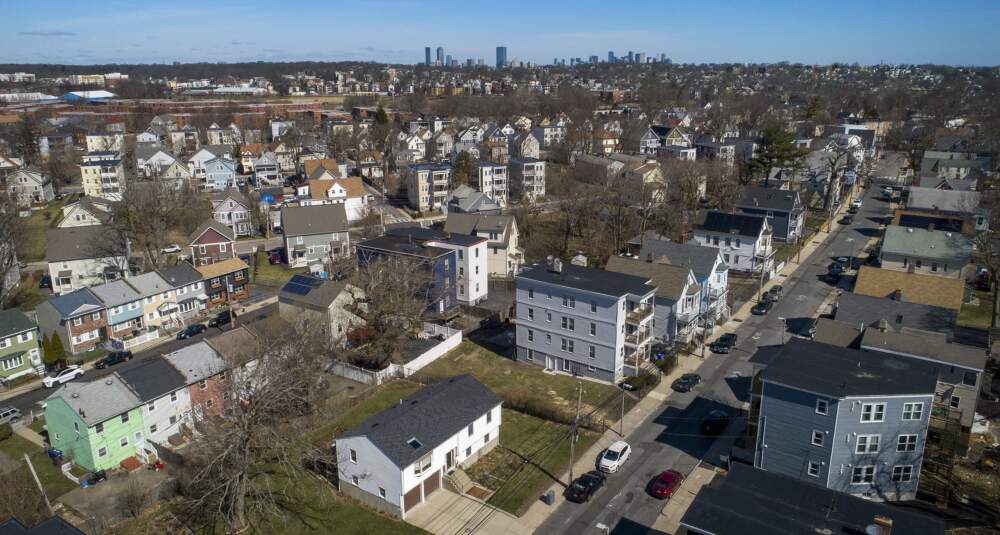Advertisement
How Greater Boston's zoning decisions reverberate a century later

Much of Greater Boston's current housing challenges can be traced back to zoning policies of the past, according to a new report released Wednesday by Boston Indicators, the research arm of the Boston Foundation.
The report examines how zoning restrictions over the last 100 years has been used to exclude people along race and class lines in Greater Boston. It pulls from official municipal planning documents, housing and zoning reports as well as news reports. It comes as officials are looking for ways to address Massachusetts' housing crisis.
Here are three highlights from the report:
Zoning was used as a tool to exclude by class
Many suburbs of Boston used zoning policies to explicitly retain wealthy people and restrict lower-income people over decades, the report found. Affluent areas in the region were zoned almost entirely for large single-family homes. And according to the report, some towns even noted in municipal planning documents that they wanted to encourage housing that attracted medium- to high-income professionals. Others wrote about their desire to remain a "prestige residential area" and some said higher zoning standards would "encourage building for a more discriminating market."
"Zoning causes us to have areas of concentrated advantage and areas of concentrated disadvantage," said Amy Dain, who researched and wrote the report for Boston Indicators. "So, if you're living in an area of concentrated disadvantage, you are missing out on the social networks, the best schools, the access to certain jobs that will help you to advance economically in life."
Zoning policies discriminated by race
Dain said there is also racial bias in zoning policies, especially as race and class are so intertwined in the U.S. — policies aimed at segregating by class, also segregate by race, she said. Dain's research also found evidence of racism in zoning policy. For example, there was a major wave of bans on apartment buildings in the 1970s that could not be explained by other factors such as potential traffic or environmental concerns. Diverse types of housing typically allows for a more diverse population, according to Dain.
"Cities and towns were banning apartments like everywhere, the 'big downzone' happened very suddenly and intensely at a specific point in time — at a time of racial change, civil rights victories and a growing call for desegregation of schools and neighborhoods," Dain said.
Current zoning laws are built on past laws
Much of this history of zoning is still relevant today, Dain said.
" Most of the zoning we have today is from decades ago," she said. "It's not like that zoning gets thrown out — it gets tweaked and revised — but the zoning remains. So a lot of the zoning we have today was written in the 1970s and earlier."
According to the report, zoning restrictions also helped create housing scarcity and high housing costs in the region as communities sought to be more "exclusive, desirable, expensive." And these things impact everyone today as there is more demand for housing, the report said. That includes elderly folks who have fewer options for downsizing, teachers who can't afford to buy homes near their job or kids who grow up and can't buy homes in their towns.
Dain said zoning reform is needed at a state-level to help alleviate the region's housing challenges. The report pointed to the MBTA Communities zoning law as an example. The law requires communities served by the MBTA to zone for more multi-family housing near public transit. The region needs to find more ways to build more housing and diversify the housing stock to meet the needs of a variety of people, Dain said.
